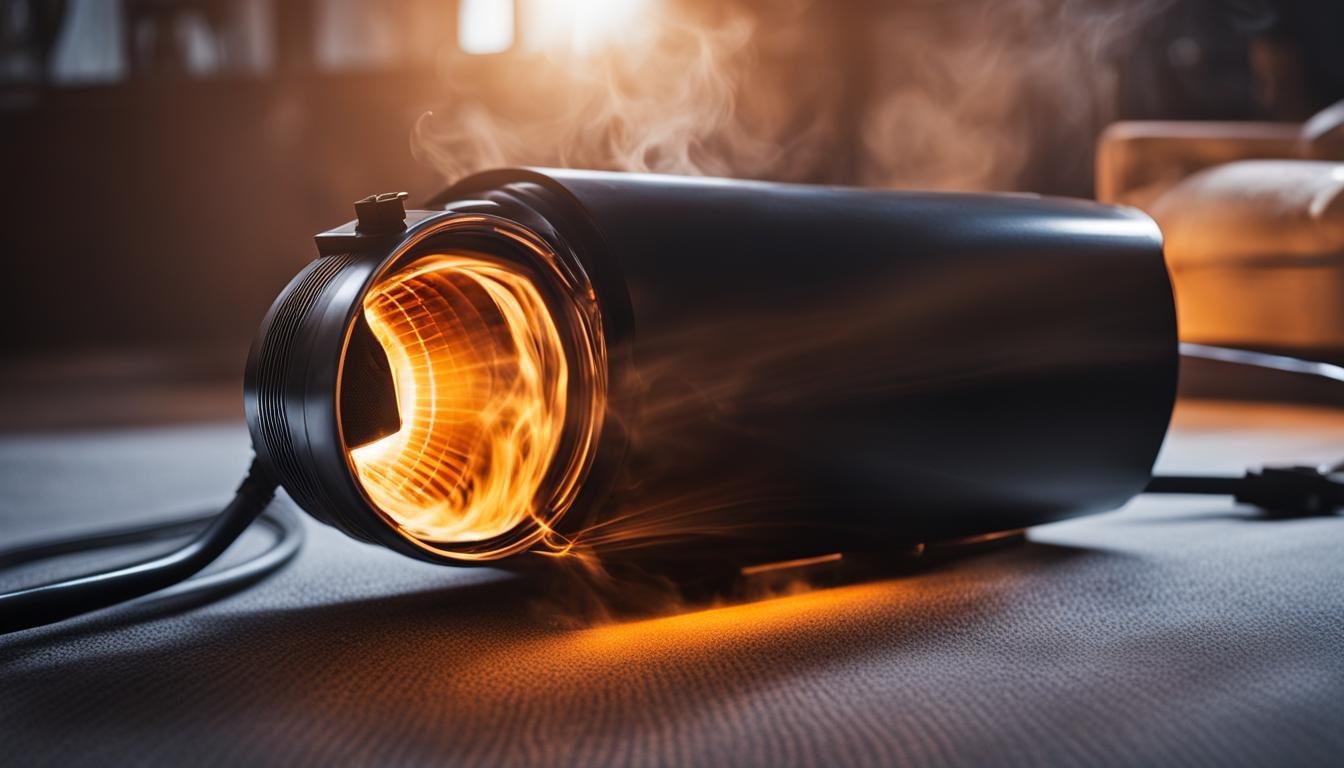When it comes to vacuum cleaners, many of us wonder how hot they can get during operation. The temperature of a vacuum cleaner can vary depending on various factors. Let’s dive into the details and explore what determines the temperature of these trusty cleaning machines.
While the maximum temperature of a vacuum cleaner is not specified, it’s important to understand the factors that can contribute to heat generation. When a vacuum cleaner is in use, it generates heat due to a combination of friction and airflow resistance within the machine.
Friction occurs when various components of the vacuum cleaner, such as the brush roll and bearings, come into contact with one another. This friction can create heat as the parts move against each other during operation.
Another factor that can contribute to heat buildup is the motor. An overworked motor, especially in a powerful vacuum cleaner, can generate heat as it works harder to maintain suction power. Clogged filters can also impede airflow and cause the motor to exert more effort, resulting in increased heat production.
Other factors that can affect the temperature include insufficient ventilation, inefficient design, overuse without maintenance, environmental factors, power settings, and the type of vacuum cleaner being used.
To ensure safe and efficient use of vacuum cleaners, it’s essential to monitor the heat buildup and follow proper maintenance practices. Regularly cleaning or replacing filters, providing adequate ventilation during operation, and being mindful of power settings can help prevent excessive heat and potential damage to the machine.
Key Takeaways:
- The temperature of a vacuum cleaner can vary depending on factors such as friction, motor workload, and airflow resistance.
- Clogged filters can lead to increased heat generation in a vacuum cleaner.
- Insufficient ventilation and inefficient design can contribute to heat buildup in vacuum cleaners.
- Maintaining proper maintenance practices, power settings, and ventilation can minimize heat buildup and ensure safe use.
- Monitoring the heat buildup and following manufacturer’s guidelines can help prevent damage and overheating.
Reasons Behind Heat Generation in Vacuum Cleaners
When it comes to understanding why vacuum cleaners generate heat during operation, there are several factors to consider.
One of the primary reasons is the friction and airflow resistance within the machine. As air passes through the vacuum cleaner, it encounters resistance and friction, especially against moving parts such as the brush roll and bearings. This friction can lead to an increase in temperature.
Additionally, an overworked motor can generate heat as it works harder to maintain suction power. When the motor is under excessive load, it tends to produce more heat, resulting in a higher temperature inside the vacuum cleaner.
Clogged filters can also contribute to heat generation. When filters are blocked or dirty, they restrict the airflow, causing the motor to work harder to maintain suction. This increased workload generates more heat.
Other factors that can contribute to heat generation in vacuum cleaners include insufficient ventilation, inefficient design, overuse without maintenance, environmental factors, power settings, and the type of vacuum cleaner being used.
It is important to be aware of these factors and take appropriate measures to prevent excessive heat buildup in vacuum cleaners. Regularly cleaning and replacing filters, ensuring proper airflow, and avoiding prolonged use without breaks can help mitigate heat generation. Choosing a vacuum cleaner designed for high-temperature operation and having adequate heat resistance is also crucial in ensuring safe and efficient vacuuming.
Comparison of Vacuum Cleaner Heat Output
| Vacuum Cleaner Model | Heat Output (in degrees Celsius) |
|---|---|
| Dyson V11 | 55 |
| Shark Navigator Lift-Away | 50 |
| Miele Complete C3 | 60 |
| Hoover WindTunnel MAX | 45 |
The table above provides a comparison of vacuum cleaner heat output for various models. Please note that these values are approximate and may vary based on usage conditions and other factors.
Conclusion
Vacuum cleaners can generate heat during operation due to various factors. Although the specific temperature range of a vacuum cleaner is not specified, it is essential to be mindful of heat buildup and practice proper maintenance to prevent damage or overheating.
Factors such as friction, an overworked motor, clogged filters, insufficient ventilation, inefficient design, overuse without maintenance, environmental conditions, power settings, and the type of vacuum cleaner used can all contribute to heat generation.
By understanding these factors and implementing regular maintenance, ensuring adequate ventilation, and adjusting power settings appropriately, users can minimize heat buildup. This not only ensures the safe and efficient use of vacuum cleaners but also extends their lifespan.
FAQ
How hot does a vacuum cleaner get?
The temperature of a vacuum cleaner can vary depending on several factors. While the maximum temperature is not specified, the heat generated during operation is primarily caused by friction and airflow resistance within the machine, an overworked motor, clogged filters, insufficient ventilation, inefficient design, overuse without maintenance, environmental factors, power settings, and the type of vacuum cleaner being used. It is important to monitor the heat buildup and follow proper maintenance practices to prevent damage or overheating.
What are the reasons behind heat generation in vacuum cleaners?
Vacuum cleaners generate heat due to friction and airflow resistance within the machine. When air passes through the vacuum cleaner, it encounters friction against moving parts such as the brush roll and bearings, leading to an increase in temperature. An overworked motor can also generate heat as it works harder to maintain suction power. Additionally, clogged filters, insufficient ventilation, inefficient design, overuse without maintenance, environmental factors, power settings, and the type of vacuum cleaner being used can all contribute to heat generation.
What is the vacuum cleaner temperature range?
The exact temperature range of a vacuum cleaner is not specified. However, it is crucial to monitor the heat buildup and follow proper maintenance practices to prevent damage or overheating. By practicing regular maintenance, ensuring proper ventilation, and using appropriate power settings, users can minimize heat buildup and ensure safe and efficient use of vacuum cleaners.






Leave a Reply